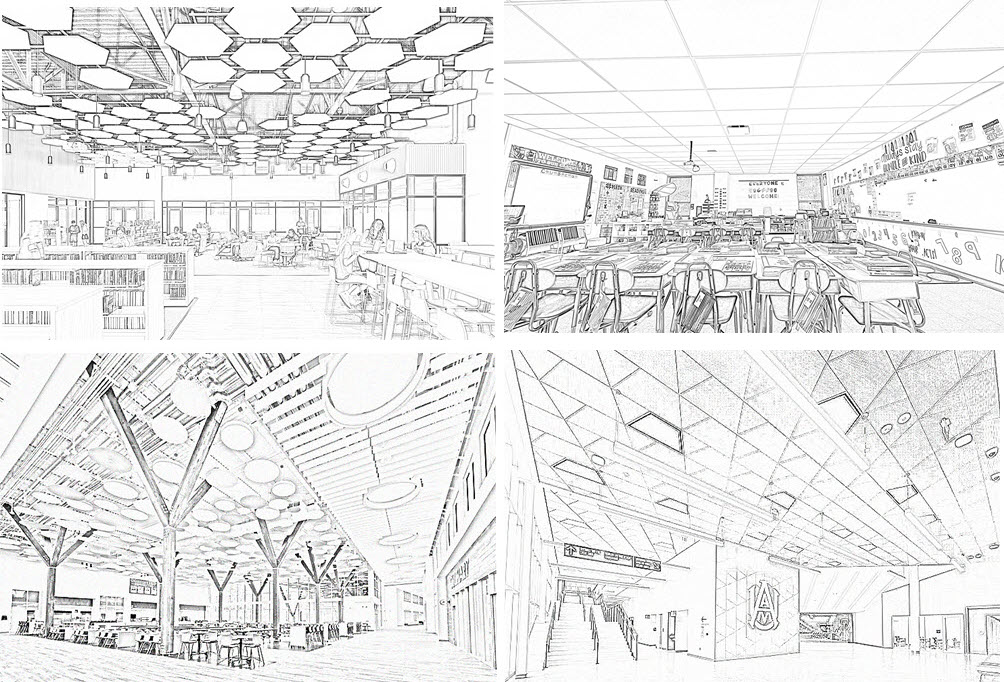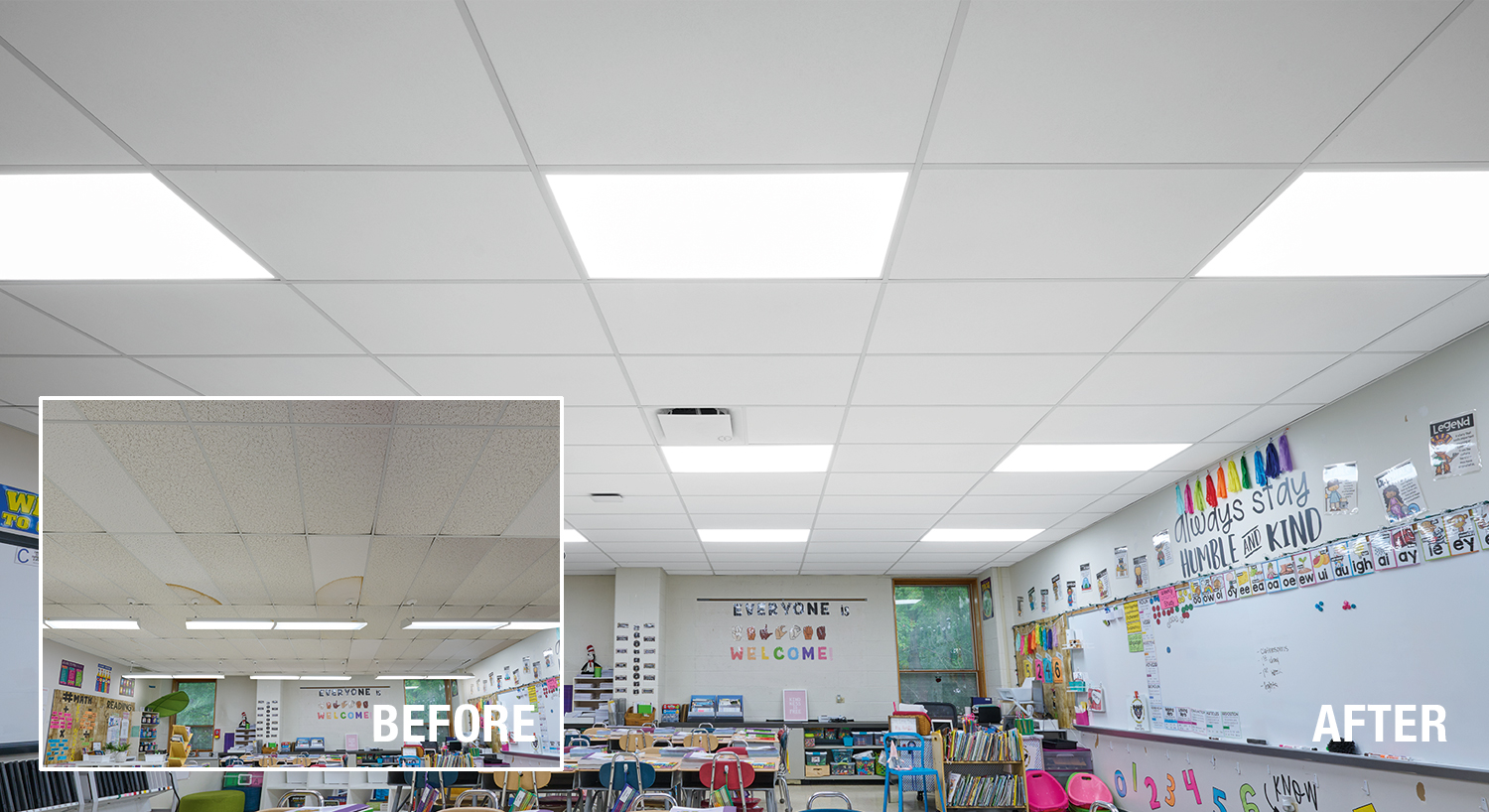Make The Grade With Your School Building
The health of your education facility directly impacts the performance of your students. Indoor air quality (IAQ), acoustics, light, temperature, aesthetics, sustainable materials and other factors all play a role in how well students perform and feel in the classroom.
Studies show the need for optimal indoor environmental quality in the classroom. For instance, for every 10 dB noise increase, math test scores decrease by over 5 points. Other findings prove that poor lighting directly effects students sleep, concentration and well-being.
By creating healthy indoor environments, we can keep students and staff in schools. We’ve been helping to create the optimal learning environments for decades by offering healthy, sustainable building materials.
Explore products that can clean the air, improve acoustics, and improve light reflectance.
Allied States Cooperative Contracts and GSA Schedule
Indoor Environmental Quality in Education
Time Well Spent*
By the time children graduate from high school, they will have spent an estimated 15,600 hours in school
Need For Cleaner Air
Students miss 14 million school days per year due to poor air quality and indoor pollutants
Improving Infrastructure**
54% of public school districts need to update or replace multiple building systems or features in their schools
Find A Healthy Solution

Support an Effective Learning Environment
Build school spaces that are healthy, functional and impactful. Armstrong offers numerous ceiling and wall solutions that contribute to an enhanced learning environment and improved indoor environmental quality (IEQ). Great acoustics, ideal lighting and air cleaning are just a few of the many product benefits.
Browse dozens of healthy building solutions by room and construction challenge.
Case Study

Panther Valley Elementary School evaluated the indoor environmental quality (IEQ) with AWAIR sensors throughout the school – measuring temperature, humidity, CO2, volatile organic compounds (VOCs), particulate matter (PM2.5), noise, and light. After identifying air quality, light and acoustic level concerns, the facility manager renovated the nurses station and a classroom to improve the IEQ with Armstrong Ceiling Solutions.
Project: Panther Valley Elementary School
Location: Nesquehoning, PA
Products: STRATACLEAN IQ Air Filtration System
VIDASHIELD UV24 Air Purification System
Videos
Passionate About Sound: Education
Watch as Julian Treasure describes the effects of acoustics in education and learning environments and how Armstrong TOTAL ACOUSTICS ceiling panels can help.
Armstrong VIDASHIELD UV24 Air Purification System
See how the Armstrong VIDASHIELD UV24 System pairs a UV-C Air Purifier with ULTIMA HEALTH ZONE or SCHOOL ZONE FINE FISSURED ceiling panels to offer safe, unobtrusive in-room air purification for cleaner air.
StrataClean IQ Air Filtration System
See how StrataClean IQ creates cleaner, healthier indoor air quality for every space, using proven MERV 13 filtration.
Contact
* Source: Harvard Healthy Buildings Program
** Source: Government Accountability Office 2020